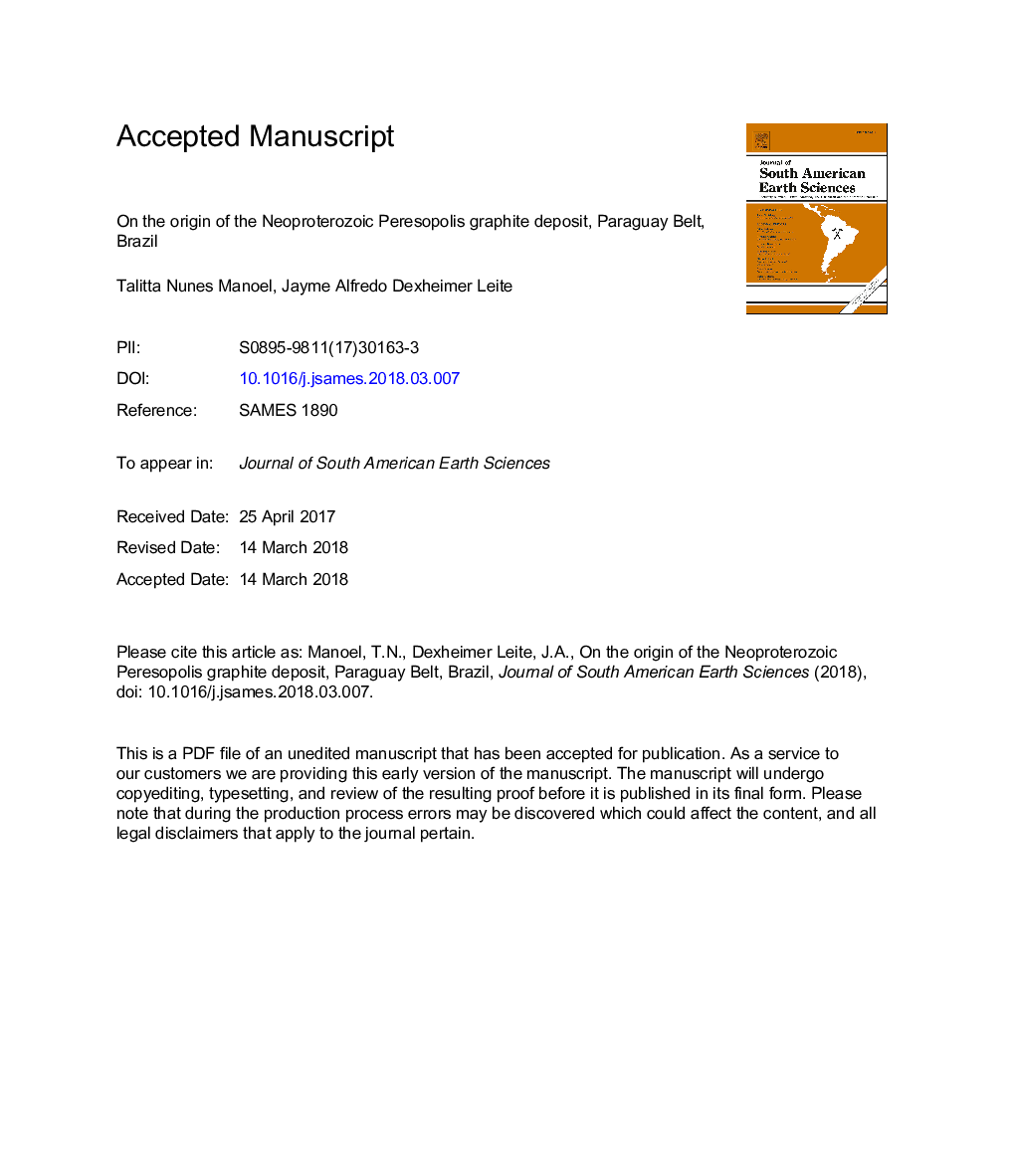| کد مقاله | کد نشریه | سال انتشار | مقاله انگلیسی | نسخه تمام متن |
|---|---|---|---|---|
| 8907656 | 1635126 | 2018 | 18 صفحه PDF | دانلود رایگان |
عنوان انگلیسی مقاله ISI
On the origin of the Neoproterozoic Peresopolis graphite deposit, Paraguay Belt, Brazil
دانلود مقاله + سفارش ترجمه
دانلود مقاله ISI انگلیسی
رایگان برای ایرانیان
موضوعات مرتبط
مهندسی و علوم پایه
علوم زمین و سیارات
علوم زمین و سیاره ای (عمومی)
پیش نمایش صفحه اول مقاله

چکیده انگلیسی
The Peresopolis graphite deposit is located northeast of Brasilândia Town in Mato Grosso State (Brazil). It consists of an 1800â¯m long, 200â¯m wide low-crystallinity graphite-bearing tabular layer that trends ENE and dips 65°ESE. The deposit is hosted in carbonaceous phyllites, which along with basal metadiamictites and upper metarenites make up the upper unit (Coxipó Formation) of the Cuiabá Group in the late Cryogenian to Cambrian Paraguay Belt (ca. 650-500Ma). The carbonaceous phyllites show a mineral assemblage consisting mostly of graphite-quartz-muscovite-albite and pyrite and dolomite to a lesser extent; alteration minerals include tosudite and kaolinite. XRD analysis confirmed the gangue material and defined the graphite as low-order crystallinity. Carbon isotope data for graphite ore returned a light and very restricted range of δ13Corg between â29 and â28â° suggesting organic matter as the source of carbon. One hundred and sixty measurements of Raman graphite spectrum returned a well-fit between full width at half maximum parameter (FWHM) which allowed its use as a geothermometer. Resulting temperatures are in the range between 285 and 300â¯Â°Câ¯Â±â¯30â¯Â°C, indicating low-to very-low metamorphic conditions for transformation of organic matter into amorphous graphite. The deposition of the organic matter should have taken place in an outer slope of a glaciomarine system and its transformation into the ore occurred because of deformation and low-grade metamorphism related to the development of the Neoproterozoic Brasiliano/Pan-African Orogeny (850-500Ma).
ناشر
Database: Elsevier - ScienceDirect (ساینس دایرکت)
Journal: Journal of South American Earth Sciences - Volume 84, July 2018, Pages 104-112
Journal: Journal of South American Earth Sciences - Volume 84, July 2018, Pages 104-112
نویسندگان
Talitta Nunes Manoel, Jayme Alfredo Dexheimer Leite,